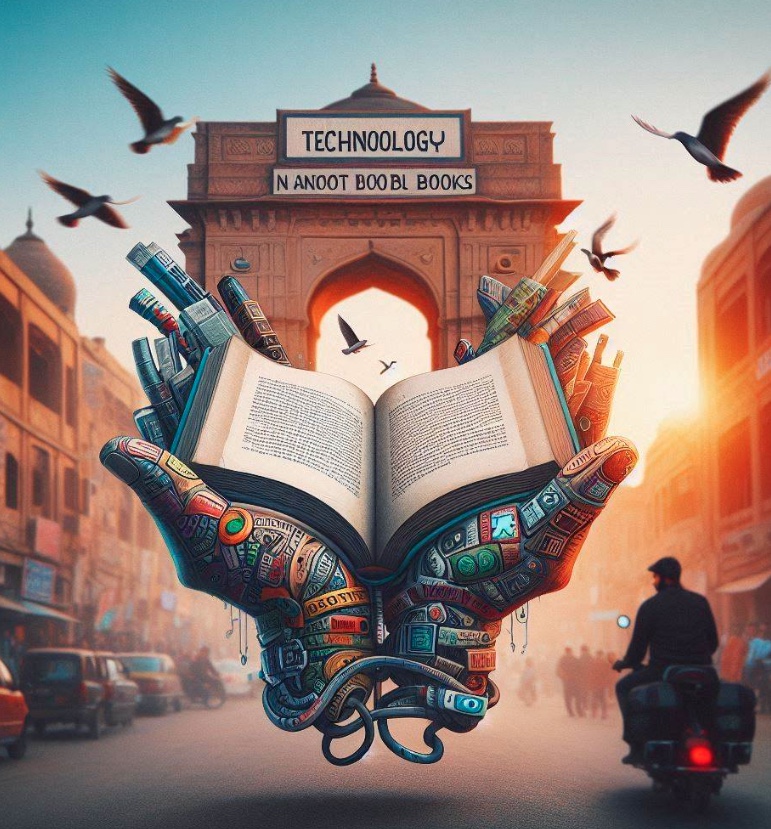In the digital age, where bright screens dominate our lives, it is easy to fall into the temptation to believe that technology can replace everything, even books. But will this be true? While tablets and e-readers offer undoubted advantages, such as portability and access to a vast catalogue of titles, the experience of reading a paper book remains unique and irreplaceable. Holding a book in your hands, flipping through the pages, and smelling the paper and ink are all tactile and olfactory sensations that contribute to an immersive and fulfilling experience. A book is an object with its own history, imperfections, notes in the margins, and ears to the pages that mark our passage. Reading on a screen exposes us to myriad distractions: notifications, emails, hyperlinks…. A book, on the other hand, insulates us from the digital world and allows us to concentrate fully on reading, promoting comprehension and memorisation.
The magic of the physical object
The blue light emitted by screens can strain eyesight and disturb sleep. Reading a paper book, especially before bed, is more relaxing and less harmful to our eyes and brains. Entering a bookstore, getting lost among the shelves, discovering new authors and unexpected titles… is an experience that the digital world cannot replicate. The randomness and serendipity of chance encounters are integral to the pleasure of reading. In some schools and universities, tablets are becoming increasingly popular as a learning tool. The ability to have textbooks, notes, interactive exercises and online resources on one device can be a significant advantage for students.
That said, tablets can be expensive, especially when compared to the price of a single paper book. This may limit their uptake in countries with low per capita income. In addition, enjoying digital content on tablets requires a stable Internet connection, which may not be available everywhere. Personal preferences and reading habits influence the choice between books and tablets. Many people still value the sensory experience and “materiality” of the paper book.
These examples do not help
Nations such as the U.S., U.K., South Korea, and Japan, which have high Internet penetration and easy access to digital devices, may show a greater propensity to use tablets for reading. This is supported by studies such as that of the Consumer Electronic Association (CEA), which in 2010 indicated that 70 per cent of tablet owners in the U.S. used them to read.
Books are witnesses to our history, our culture, and our thinking. Preserving them and passing them on to future generations is a duty we owe to humanity. Technology can be a valuable ally in reading, but it can never completely replace the unique and irreplaceable experience of reading a paper book. Books are more than just containers of words: they are objects that stimulate our senses, our imagination, and our capacity for reflection. They are travelling companions accompanying us throughout our lives, enriching us and making us grow.

Not in competition
Ideally, books and tablets could be used complementary, leveraging both tools’ strengths to create a rich and stimulating learning environment. Books and tablets are not necessarily competing but can work together to create a richer and more complete learning experience. The book, with its physicality, offers an immersive reading experience and promotes concentration. Reading on paper, flipping through pages, and underlining important passages help create a bond with the text and facilitate memorization. The tablet, on the other hand, opens a world of possibilities. It allows access to multimedia content such as videos, animations and audiobooks, which enrich the learning experience and make it more stimulating.
In addition, because of its portability and the ability to access the Internet, the tablet makes it easier for students to search for information, explore in-depth topics, and collaborate. Imagine a student reading a historical novel. With the book in his hands, he can immerse himself in the narrative, underline passages that strike him and jot down his own reflections in the margins. At the same time, he can use the tablet to view maps of the historical period, delve into the author’s life, or search for images of the places described in the book. In this way, books and tablets complement each other, providing a more engaging and multidimensional learning experience. The important thing is to know how to use both tools in a balanced way, leveraging their strengths to create a personalised and stimulating learning journey.



